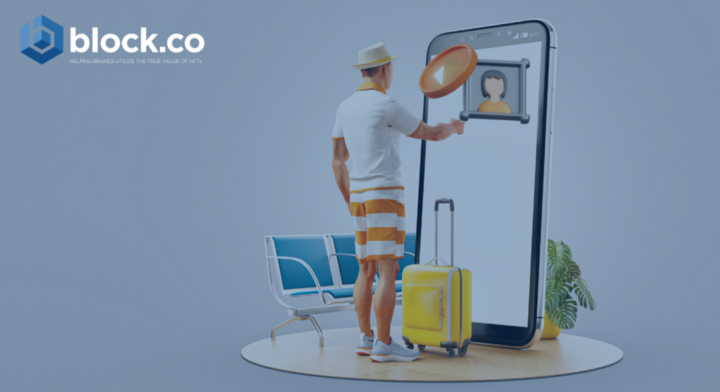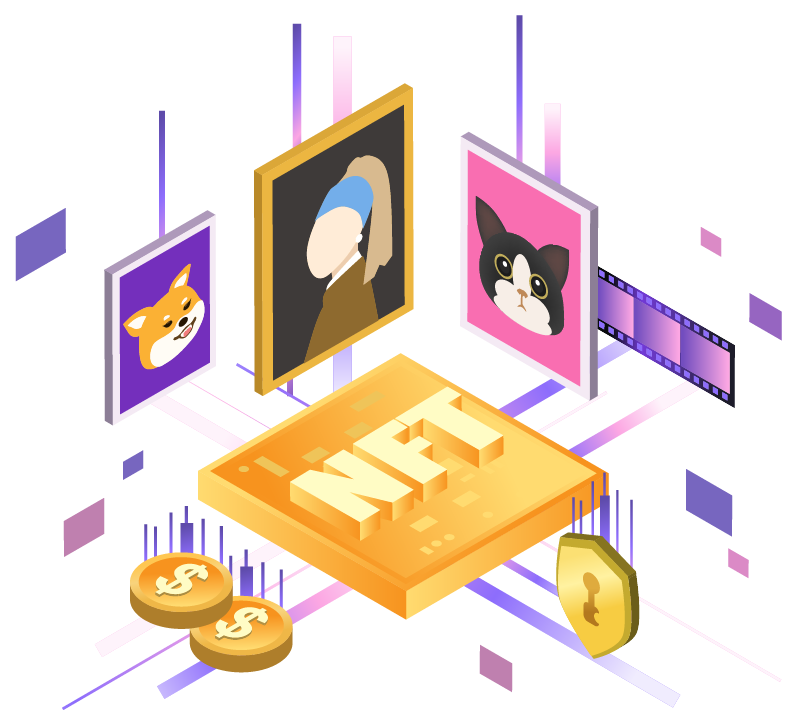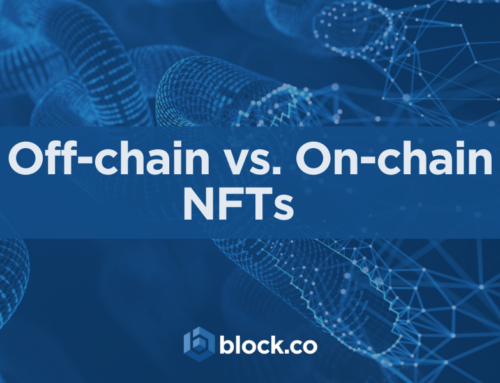Smart Tourism & NFTs

In this article, we will address the application of blockchain technology and how this technology can initiate a paradigm shift in the dynamics and economic model of the tourism and travel industry. As these industries are highly affected by COVID challenges, blockchain and NFT technology bring the promise of alleviating various pain points. This is a guest blog from Block.co’s ambassador Kathi Vekri.
Starting from the basics, at its core, a blockchain is just a ledger – a record of time-stamped transactions.
These transactions can be any movement of money, goods, or secure data, a purchase at a store, for example, the title to a piece of property, the assignment of an id number etc. In the offline world, transactions are verified by some central third party, a government agency, a bank, or Visa, but a blockchain is a distributed ledger where verification (and therefore trustworthiness) comes not from a central authority but from a consensus of many users of the blockchain that a particular transaction is valid. Verified transactions are gathered into “blocks”, which are then “chained” together using heavy-duty cryptography so that, in principle, any attempt retrospectively to alter the details of a transaction would be visible.
So, like cryptocurrency, NFTs are created using a blockchain that acts as a database to record all transactions. Blockchain guarantees authenticity of non-fungible tokens. With this system, any user can verify the original and history of each NFT. By buying an NFT token, the user buys a certificate on the product. This certificate is essentially a line of code that confirms that it is the owner of the token who owns the original copy of the object. The NFT token is compared to a painting that may belong to a gallery, a museum, or a private individual, but the audience can see it in a catalogue or exhibition.
Fungible or Non-Fungible tokens – What is Fungibility?
Fungibility is the ability of an asset to be exchanged for another asset of the exact same type. For example, a $5 bill is fungible with all other $5 bills. They represent the same value. But the painting of Mona Lisa for instance, is non- fungible — meaning only one real, unique version exists. And while NFTs are gradually taking up across all the industries – art, architecture, sports, entertainment, adventure, leisure, and many more, NFTs can also provide an innovative way that strategically employs the trust and reliability of the blockchain principles for a unique holiday experience.
NFTs for smart tourism?
Using NFTs and metaverse solutions with AI data-driven protocol sets, we can create clear digital transformation solutions for the travel and entertainment space. Smart tourism and property tech can help these industries with new solutions empowering them on a global level. The travel industry is expected to start back on its trajectory by 2022, and to regain its full momentum by 2025.
Tourism can be empowered with NFTs where suppliers can create, store, and sell their services in the form of NFTs. Most global travelers or property buyers must deal with local currencies, lack of transparency in buying or leasing property and timeshares and losing money to high exchange fees or worse. A consolidated marketplace and token solution will solve many of these issues, and with a Blockchain-enabled ecosystem we can also provide timeshare and NFT solutions for holiday experiences for the global audience via smart contracts. Smart contracts are simply programs stored on a blockchain that run when predetermined conditions are met. They typically are used to automate the execution of an agreement so that all participants can be immediately certain of the outcome, without any intermediary’s involvement or time loss.
The tourists, business travelers, travel agencies, tourism operators, hospitality chains, and property clients from all over the world are increasingly accepting this revolutionary scheme. Premium vacation property- resorts, hotels, marinas, and many more are tokenized as digital assets. Blockchain inundation has guaranteed transparency and a decentralized system, thereby democratizing it entirely for all members of the community they represent. Its overall system architecture links the enthusiasts with attractions in an increasingly reliable way.
And some of the key goals of such an innovative solution are:
• Creating innovative opportunities for travelers, hotel and hospitality operators, and other tourism service providers. This would ease the recovery of the tourism post-pandemic phase.
• Spreading awareness about the cryptocurrency among the suppliers and travelers and expanding the markets for NFTs and timeshare.
• Linking the market strategists with as many verticals as possible, creating an interconnected network of business to build a healthy ecosystem.
For example, NFTs present an opportunity for travelers to prove they have done a particular thing: If a traveler visits a specific landmark in the physical world, for example, he or she could receive a digital souvenir in the form of an NFT. It’s a great way to not only log your travels, but it also allows [proprietors] or restaurants or graffiti artists and anyone who has something in the physical world and wants people to engage with, to offer something in a digital world as an incentive. Getting people to engage with the product helps bridging the gap between the physical and digital.

Proof of travel
Several companies have already introduced new products that allow travelers to mint exclusive digital assets based on “proof of travel.”
An example for that is Pebble Tracker, a hardware that can capture and cryptographically sign real-world data such as location, climate, motion and light using a built-in secure element, similar to the ones used in smartphones for Face ID. Once gathered, verifiable data from the Pebble Tracker is then assigned to a decentralized identity, which is described as a “personal data locker,” which allows the users of a device to own and control the verifiable data exclusively. Moreover, in April, IoTeX announced it has partnered with blockchain-based online travel agency Travala to explore using Pebble Tracker to record travelers’ journeys on the blockchain, fueling new use cases like decentralized travel logs, travel competitions and location-based NFTs via the proof of travel. Pebble Tracker can prove “in a tamper-proof way that you were at a certain place at a certain time.
Another example would be someone visiting a museum and collecting digital “badges” by visiting a specific art segment in the museum, incentivizing them to complete a specific itinerary and rewarding them with proof of what they completed. In the same sense that some people collect fridge magnets from their trips and displaying them as “proof of travel”, digital collectibles can be shown to the whole world, and not just home visitors. Through a digital wallet, you can show to other people and say, ‘Hey, this is what I’ve done’ without creating more wastes in items made from unrecyclable materials from China. So, we are more than close to saying here that the next step for NFTs, is going to be around digital experiences. “It’s not just about ‘I have this.’ It’s more about ‘I’ve done this, I’ve visited this, I’ve experienced this.’”
AR/VR and smart tourism
Another use case of NFTs is in VR (Virtual Reality) and AR (Augmented Reality). A.R is a technology that digitally augments the reality around a user when viewed through sunglasses, phones, or other digital viewing devices. Travel, tourism, and hospitality companies can create AR-enabled, geo- positioned tours across major cities and ancient monuments.
For example, they could record a tour guide in 360 degrees standing at a particular location speaking about something historic that happened there. They would then guide the tourists to move to the next place, where another pre-recorded AR experience would give the tourists some more information. An entire tour could be created this way, and every time a package is bought, it would unlock the whole experience for a user for a particular duration. Additionally, experiences in this form can also be time-locked; for example, if a tour guide talks about sunset from a specific location, that experience can only be available 30 minutes before sunset. It is simply a way to avoid misunderstandings by allowing potential customers to experience their vacations first-hand. And by doing that as a demo of their hotel or restaurant etc. they save time and money before deciding which place to visit first!
Conclusion
NFTs can instantly transform our life experiences and content into verifiable assets that are easy to buy, sell and access using the underlying blockchain. They are a tool that will allow for hybrid ownership and collaboration between all the stakeholders. Although our focus on this article was on NFTs and Tourism, it is obvious to the reader that this is the tip of the iceberg when it comes to the potential use cases across sectors and industries. If you would like to discuss further on the subject and how Block.co helps tourism brands expand into the metaverse through NFTs, then contact me directly on LinkedIn!
By Akathisti Vekri


If your brand is ready to take the step into web 3.0 and NFT marketing, to optimize engagement with your audience in innovative ways, then click the button below to get your Free Trial, a limited number of Free NFTs, and a Free Consultation call from our team!
For more info, contact Block.co directly or email at enquiries@block.co.Tel +357 70007828
Get the latest from Block.co, like and follow us on social media:







